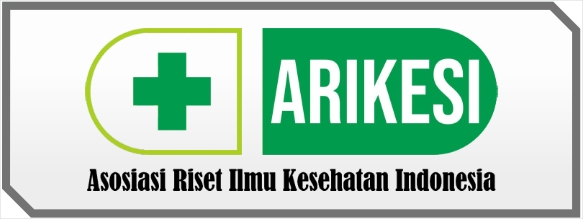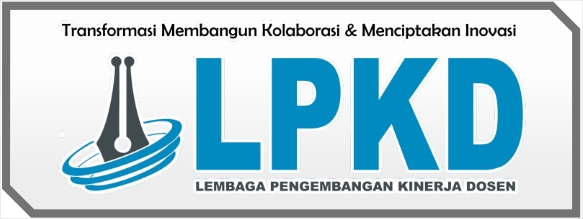Tinea Corporis Et Cruris
DOI:
https://doi.org/10.55606/termometer.v2i2.3679Keywords:
Dermatophytia, Tinea coporis, Tine Crurirs, KOH 10%Abstract
Dermatophytes themselves are filamentous fungi with the ability to attack keratinized tissue such as skin, hair and nails. Classically, dermatophytes are divided into three genera, namely Trichophyton, Epidermophyton, and Microsporum. Dermatophyte infections are generally limited to the stratum corneum of the epidermis, especially in tropical areas with hot conditions that are ideal for the growth of dermatophytes, especially in moist areas of the body. National epidemiological data on tinea corporis for Indonesia is still not available. According to data on dermatophytosis cases found in the Skin and Venereology Mycology Division of Dr. Soetomo Surabaya for the 2014-2016 period, it was found that the percentage of tinea corporis cases was 56.1%, followed by tinea cruris at 34.3%, and tinea capitis at 6.4%. Predisposing factors for this disease in the host include lack of hygiene and immunocompromised conditions. Fold areas including the groin and armpits are more susceptible to infection due to excessive sweating and friction. Environmental factors that put a person at a higher chance of contracting the disease include high humidity, high temperatures and tight clothing. The clinical manifestation is the presence of a characteristic circular lesion, usually with firm borders, pink to erythematous with raised edges. As the lesion develops, the central area of the lesion is usually calmer (central healing) and the lesion is annular with a scaly edge area. Supporting examinations were carried out with KOH solution. Management in general is in the form of educating patients to wear light and loose clothing and keep the skin clean and dry. Specific management includes administering topical antifungals or systemic antifungals
Downloads
References
Brescini L, Fioriti S, Morroni G, Barchiesi F. Antifungal Combinations in Dermatophytes. Journal of Fungi. 2021 Sep 5;7(9):727.
Ahmad S, Ahmad G, Mohsin M. Superficial Dermatophytic Infection Prevention and Its Management: A Review. International Journal of Research and Review. 2021 Aug 25;8(8):427–39.
Rengasamy M, Shenoy M, Dogra S, Asokan N, Khurana A, Poojary S, et al. Indian association of dermatologists, venereologists and leprologists (IADVL) task force against recalcitrant tinea (ITART) consensus on the management of glabrous tinea (INTACT). Indian Dermatol Online J. 2020;11(4):502.
Rahadiyanti DD, Ervianti E. Studi Retrospektif: Karakteristik Dermatofitosis. Berkala Ilmu Kesehatan Kulit dan Kelamin. 2018 Apr;30(1):66–72.
Jartarkar SR, Patil A, Goldust Y, Cockerell CJ, Schwartz RA, Grabbe S, et al. Pathogenesis, Immunology and Management of Dermatophytosis. Journal of Fungi. 2021 Dec 31;8(1):39.
Sahoo A, Mahajan R. Management of tinea corporis, tinea cruris, and tinea pedis: A comprehensive review. Indian Dermatol Online J. 2016;7(2):77.
Siswati AS, Rosita C, Triwahyudi D, Budianti WK, Mawardi P, Dwiyana RF. Panduan Praktis Klinis Bagi Dokter Spesialis Dermatologi dan Venereologi Indonesia. Jakarta: PERDOSKI; 2021.
Petrucelli MF, Abreu MH de, Cantelli BAM, Segura GG, Nishimura FG, Bitencourt TA, et al. Epidemiology and Diagnostic Perspectives of Dermatophytoses. Journal of Fungi. 2020 Nov 23;6(4):310.
Kang S, Amagai M, Brucknerl AL, Enk AH, Margolis DJ, McMichae AJ. Fitzpatrick’s Dermatology. 9th ed. Vol. 2. McGraw Hill Education; 2019.
Susanto IK. Tinea Corporis Therapy. Jurnal Kedokteran Meditek. 2023 Jan 14;29(1):82–8.
Gadithya IDG, Darmada IGK, R LMM. Laporan Kasus Tinea Korporis et Kruris. Jurnal Medika Udayana. 2015 May;3(4):449–62.
Riyadi E, Batubara DE, Pratiwi Lingga FD. Hubungan Higiene Perorangan Dengan Angka Kejadian Dermatofitosis. JURNAL PANDU HUSADA. 2020 Oct 24;1(4):204.
Yuwita W, Ramali LM, H. RMN. Karakteristik Tinea Kruris dan/atau Tinea Korporis di RSUD Ciamis Jawa Barat. Berkala Ilmu Kesehatan Kulit dan Kelamin - Jurnal Universitas Airlangga. 2016;28(2).
Wolff K, Johnson RA, Saavedra AP, Roh EK. Fitzpatrick’s Color Atlas and Synopsis of Clinical Dermatology. 8th ed. McGraw Hill Education; 2017.
Menaldi SLS, Bramono K, lndriatmi W. Ilmu Penyakit Kulit dan Kelamin. 7th ed. Jakarta: Badan Penerbit FK UI; 2016.
Sidhu G, Akhondi H. Loratadine [Internet]. StatPearls Publishing LLC; 2024 [cited 2024 Mar 12]. Available from: https://www.ncbi.nlm.nih.gov/books/NBK542278/
Downloads
Published
How to Cite
Issue
Section
License
Copyright (c) 2024 Termometer: Jurnal Ilmiah Ilmu Kesehatan dan Kedokteran

This work is licensed under a Creative Commons Attribution-ShareAlike 4.0 International License.










